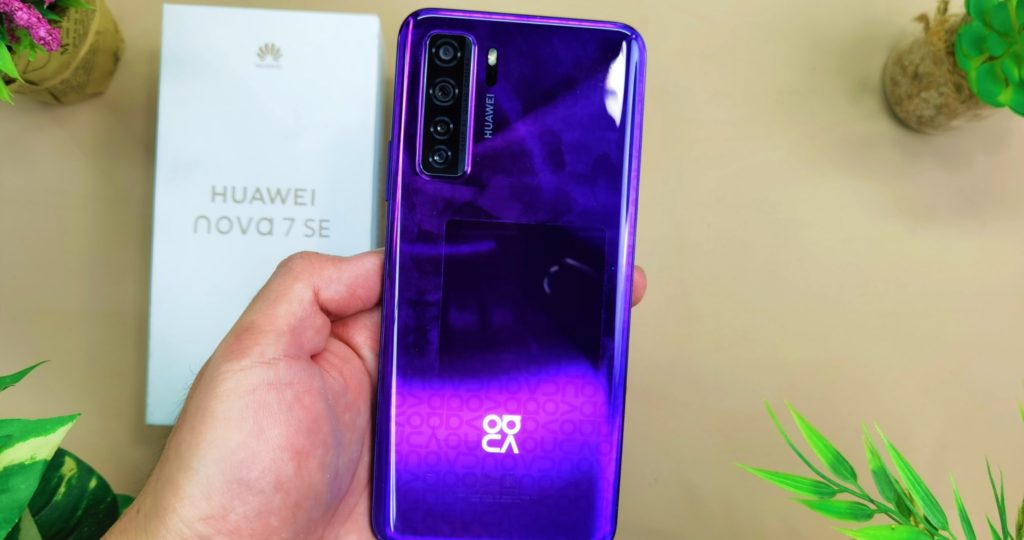
Huawei nova 7 SE Review – Pretty Purple 5G Power Performer
When it comes to midrange phones, smartphone manufacturers have to aim for an elusive sweet spot between price and performance though last year’s midrange nova 5T proved to be quite a hit as it had features that covered the basics along with a smattering of features and tech from their higher end phones.
This time around, Huawei has issued a successor to last year’s nova 5T with even better hardware that they’ve dubbed as the nova 7 SE.
We managed to get a retail sample of the Huawei nova 7 SE ahead of its imminent Malaysia release for review and put it through its paces.
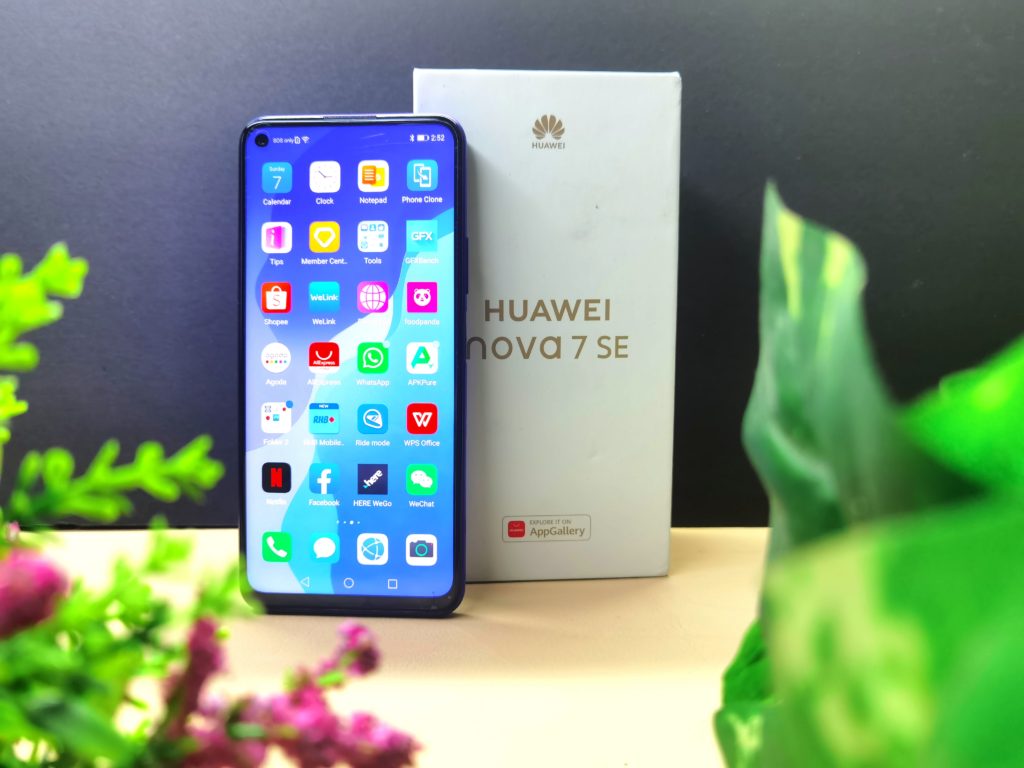
N2032
Huawei nova 7 SE – What’s in the Box
Table of Contents
In keeping with its predecessor, the Huawei nova 7 SE comes with an array of accessories that covers the essentials. The whole affair is encased in Huawei’s usual white cardboard packaging. Popping the case open reveals the phone itself protected in a clear plastic sleeve.
Just beneath it in a cardboard insert is a SIM ejector pin and a soft TPU casing that’s precisely fitted to the phone’s dimensions.
Beneath that is a USB Type-A to Type-C cable for charging and docking duties, a pair of wired earbuds and, interestingly enough, a UK-style 3-pin 40W Supercharge charger to take full advantage of the nova 7 SE’s charging speed.

The provided earbuds are of the cheaper variety with hard plastic ear pieces which aren’t particularly comfortable when used for long periods of time. Still, they’re better than nothing and do the job.
The fact that they’ve thrown in all this kit for a midrange phone, especially the 40W Supercharge charger is nevertheless generous indeed.
Huawei nova 7 SE – EMUI, the new AppGallery and Specifications
In terms of overall build and design, the nova 7 SE retains many of the aesthetic cues from the older 5T. You have a punch hole for the selfie camera in the upper left corner of the display, slim bezels all around with a slightly more prominent lower bezel ‘chin’, a vertically emplaced rear quad camera array and a striking metallic purple finish.
Where it differs is that the newer nova 7 SE is both slightly longer, slightly wider by 1mm, a wee bit thicker and heavier to boot to account for the improved hardware and slightly larger battery.

The front display has been bumped up in size by 0.25-inches to make it a 6.5-inch diagonal LTPS IPS LCD display with a slightly wider 20:9 aspect ratio. The resolution has also been slightly bumped up on account of the longer display at 1080 x 2,400 pixels compared to the older nova 5T.
Like its predecessor, the nova 7 SE has slim bezels on the top and sides but retains the still prominent chin at the bottom and the cutout for the 16-MP selfie camera in the corner. Up top, there is a tiny grille for the earpiece to take calls.
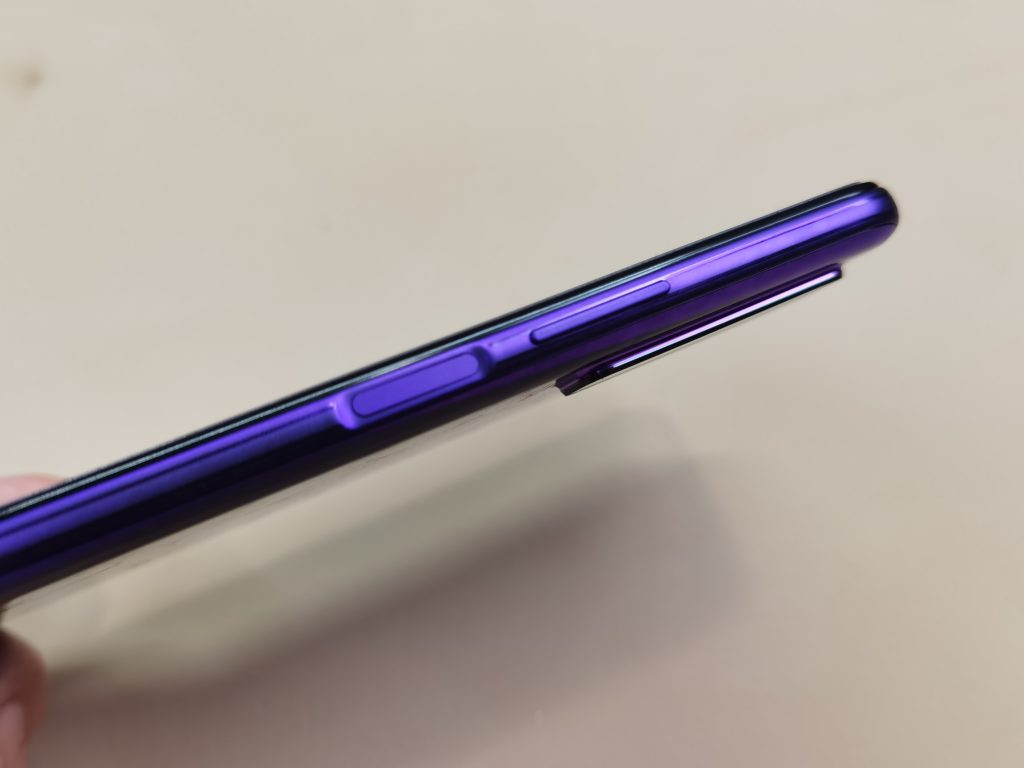
The right side has a volume rocker and a power button that also doubles as a fingerprint reader while the left side of the phone hosts a hybrid SIM card tray that lets you put in two SIM cards or one SIM card and one of Huawei’s own Nano Memory (NM) storage cards up to 256GB in size.

The base of the phone still retains a 3.5mm audio jack – a rarity in this day and age – along with a USB Type-C port and speaker grille for the bottom firing mono speaker.
The rear backplate continues the aesthetic legacy of the nova 5T with a stylish monogram of the nova logo done up in silver with a similar pattern repeated all across the back. It looks attractive but still attracts fingerprints aplenty. Slapping on the bundled case when you first pop the nova 7 SE is a necessity.
In terms of hardware, the nova 7 SE came with the following:
Specifications
Price RM1,499
Display 6.5-inch LTPS IPS LCD, 1080 x 2,400 pixels, 405ppi
Processor Kirin 820 5G
OS EMUI 10.1 with Huawei AppGallery
Memory 8GB RAM/128GB storage
Camera 64MP F/1.8 + 8-MP F/2.4 ultrawide + 2MP macro + 2MP depth sensor [rear] / 16MP F/2.0 [front]
Battery 4,000mAh w/ 40W fast charging
Size/Weight 162.3 x 75 x 8.6mm /189g
The hardware is an improvement over the older nova 5T across the board. Of note is that the Kirin 820 5G chip has 5G connectivity with support for standalone and non-standalone bands. This helps to future-proof the phone somewhat when 5G eventually rolls into Malaysia.
At a price point of RM1,499 , the nova 7 SE is currently the cheapest 5G-capable phone in the market which adds volumes to its longevity.
Storage and RAM are similar to the nova 5T but the advantage here is that the newer nova 7 SE allows for the use of NM cards to add more storage. For most casual users, the 128GB of onboard storage is plenty unless you are wont to take reams of video and dozens of shots every day.
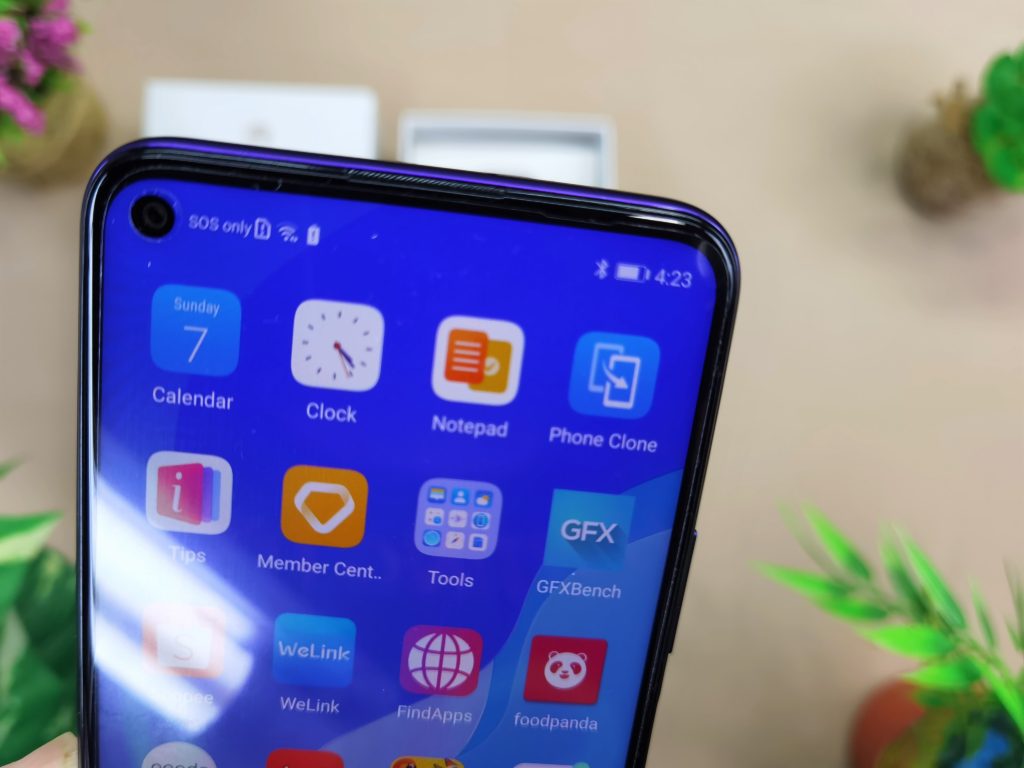
The biggest difference between the nova 5T and the new nova 7 SE is that the latter ditches Google’s suite of apps entirely in favour of Huawei’s own AppGallery.
Fortunately, most of the usual staples that Malaysians rely on are available in some form or fashion on the AppGallery like Shopee, Lazada, your usual array of banking apps and the like though some of the more popular ones need to be sources offsite on the original developer websites like Netflix and WhatsApp.
Fortunately, Huawei has issued an AppFinder app that helps you source where to get the apps you need be it on the AppGallery or elsewhere.
Sometimes, we needed to resort to other alternative sites to sideload applications like ApkPure. It’s not a completely seamless experience yet but it’s certainly an improvement from when the AppGallery first kicked off last year but there’s a few too many hoops to jump through for novices.

Huawei has issued a FindApps app that helps suggest sources to find the apps you want
Getting about Huawei’s EMUI interface is straightforward with your choice of Huawei’s edge-swipe interface or the usual Android style of having three menu buttons at the bottom. Personally, I preferred the latter as it offered more consistent responses.
The tricks that EMUI has to offer like split screen mode, where you can multitask to some degree by putting two apps out of a selected pool simultaneously onscreen, are present and correct.
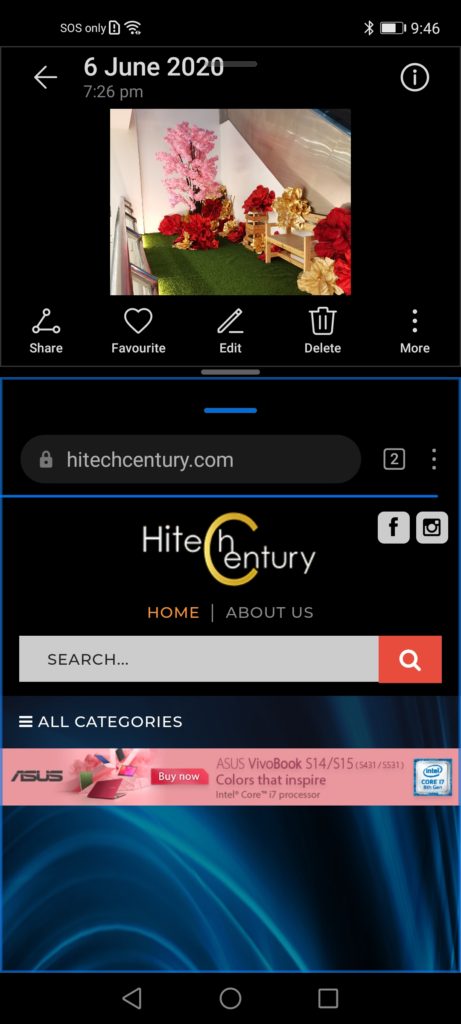
There’s also Huawei’s vaunted multi-screen collaboration feature that lets you pop up an instance of the display on a Huawei laptop or tablet like the MatePad Pro for a more seamless work experience.
Multi-screen collaboration worked as it says on the tin and paired up with a MatePad Pro in seconds, allowing us to control, access notifications and more on the nova 7 SE off the MatePad Pro’s touchscreen display. It’s a useful feature to have but it’s so far only limited to Huawei devices only so you need to be invested in their ecosystem for it to work.
When subjected to benchmarks, the nova 7 SE got the following:
PCMark Work 2.0 Performance score 8,217
GeekBench 5.1 Single core score 614 Multi-core score 2,324
3DMark Sling Shot Extreme – Open GL ES 3.1 4,077
3DMark Sling Shot Extreme – Vulkan 3,898
In use, the phone offered smooth performance with lag-free web browsing with a dozen switched tabs in Huawei’s own stock browser. Other apps opened in a relatively smooth fashion with little delay and it managed to tackle Asphalt 9: Legends and PUBG Mobile smoothly at high settings.
There’s little to complain about here and as midrange phones go, it exceeds the benchmarks of its predecessor the nova 5T by a noticeable margin and can give other phones in its price range a run for their money.
The display itself is up to snuff with good colour rendition and detail with the increased 20:9 aspect ratio allowing for more of a view, especially for movies and gaming. The positioning of the selfie camera in the corner allows for a clearer, unimpeded view of the main display.
Like other midrange phones, there’s only one downward firing speaker on the nova 7 SE and this is the one area that hasn’t seen much improvement from its predecessor. It’s serviceable and is sufficient to catch the odd video or two and play a game or two on the go.
You can opt for using a pair of headphones via the 3.5mm audio jack though it’s best to spring out for a better pair as the bundled ones are uncomfortable to use for anything beyond a few tracks or an episode of Money Heist.
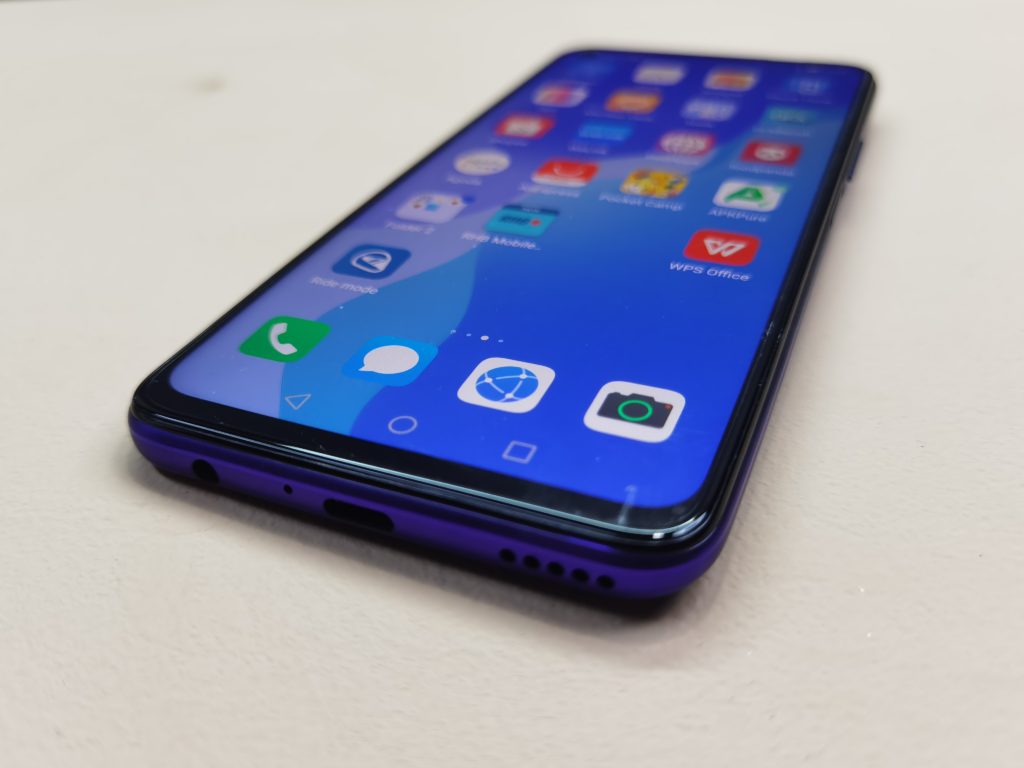
Battery life is surprisingly good on the nova 7 SE on account of its efficient chipset that’s built on a 7nm process, the fairly aggressive app and memory management of EMUI and the large 4,000mAh battery.
With average usage including data on all day, constant use of TikTok and Facebook as well as WhatsApp, a couple of hours of gaming and a few phone calls daily, the phone managed to last close to two days of usage.
Charging it is a doddle as the 40W SuperCharge charger can give it a 70% juice-up in half an hour which is a pleasant bonus indeed seeing as many other competing phones just give you a standard charger which takes far longer to work.
Huawei nova 7 SE cameras
The nova 7 SE comes with a quad camera array centered around a primary 64MP camera that has an F/1.8 aperture, phase detection autofocus as well as liberal help from the neural processing unit (NPU) of the Kirin 820 5G processor.
This time around the Kirin 820 5G offers a Huawei-issued ISP 5.0 and 3D filtering (BM3D) image noise reduction as well as dual-domain video noise reduction for better low light imagery.
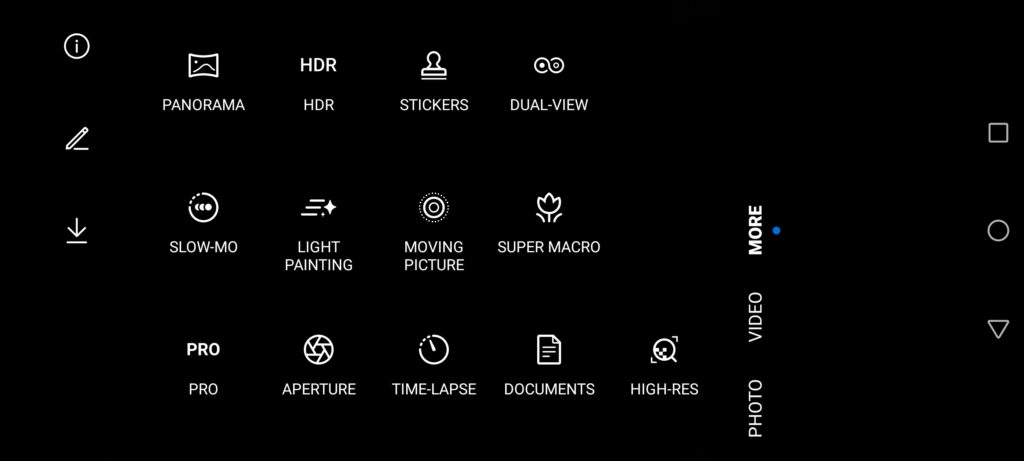
The primary 64MP camera is paired up with an 8MP F/2.4 ultra wide angle camera, a 2MP ultra macro camera and a 2MP depth sensor. In practice, the primary and ultra wide angle camera does most of the work with the 2MP ultra macro camera coming into play only in extremely close-up work.
Combined, this array allows for up 4K@30fps video off the main 64MP camera albeit without any beautification or other AI enhancements as well as shots at up to 6x digital zoom for video and 10x for stills.
Dial the video resolution down to 1080p@60fps and you can take advantage of the phone’s extensive AI-assisted enhancements like beautification modes on the fly to make subjects in the frame svelter and prettier or handsomer.
One thing to note here is that none of the cameras have optical image stabilisation and save for the main 64MP which has PDAF, the cameras rely on the AI for steady videos and snaps though it does a surprisingly good job at it.
The camera user interface is culled from the higher end phones in Huawei’s line-up so you have access to a fully featured Pro mode, a 960fps@720p slow-mo mode, an Ultra macro mode for close-ups and a dedicated Night mode among all the other usual filters and basic modes.
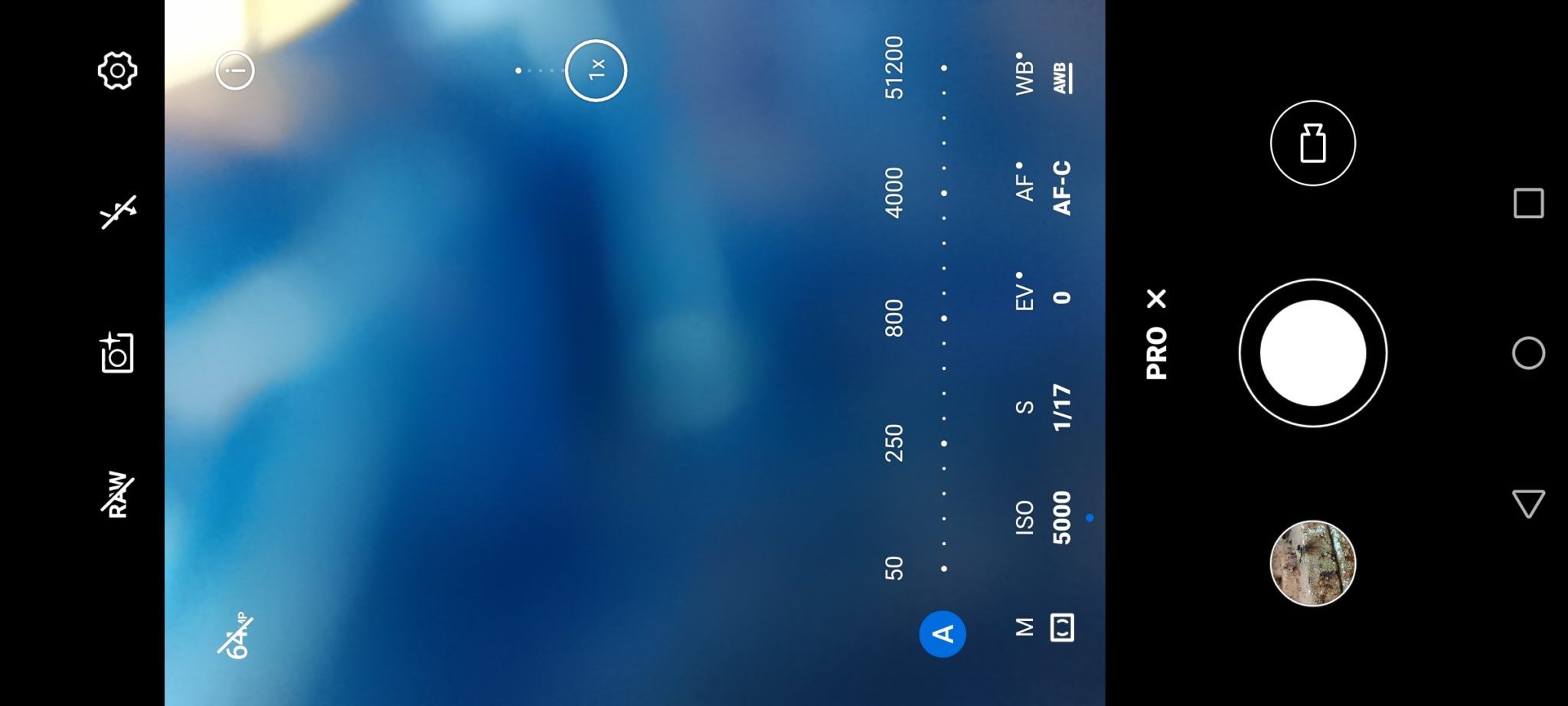
The nova 7 SE’s Night mode relies on the primary camera and allows for the same zoom levels as auto mode with up to 10x digital zoom for stills
In Pro mode, you’re able to tweak a host of features including white balance, exposure, shutter speed and up to a whopping 51,200 ISO. In auto mode, you’re able to dial a slider to access the wide angle camera or to enable digital zoom as needed with all the more exotic stuff hidden in a submenu.
The camera itself lacks some of the more recent refinements from the P40 line like reflection removal and deleting photobombers from shots but that’s understandable seeing the midrange price point of the nova 7 SE.
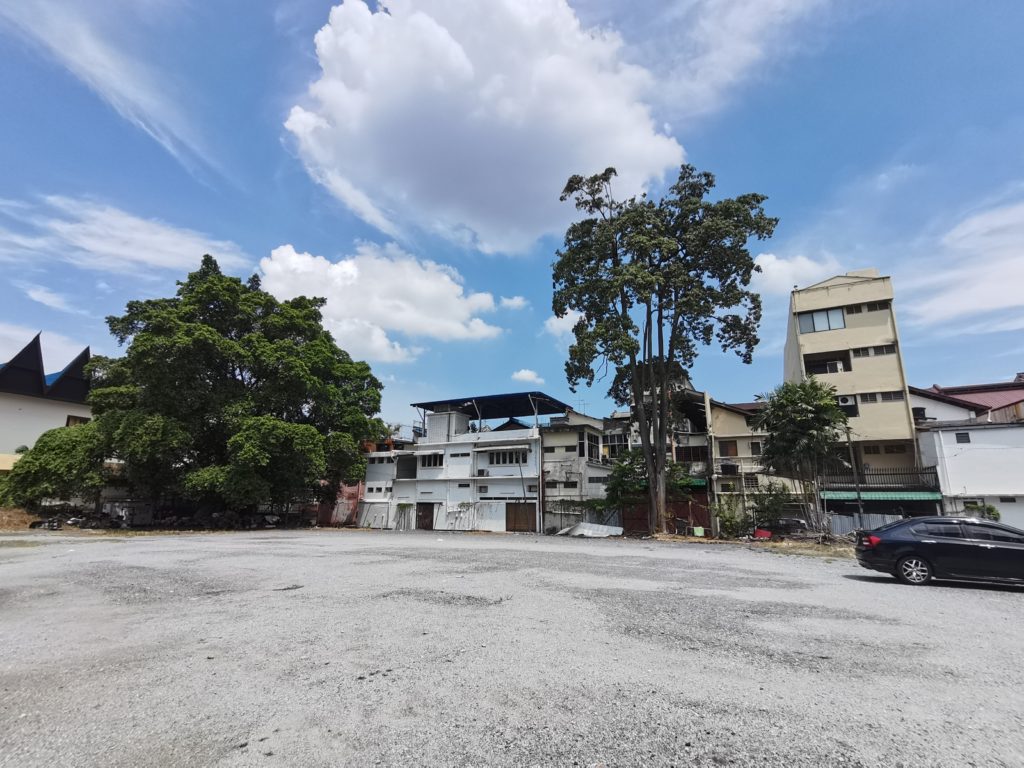
Ultra wide angle camera on the Huawei nova 7 SE
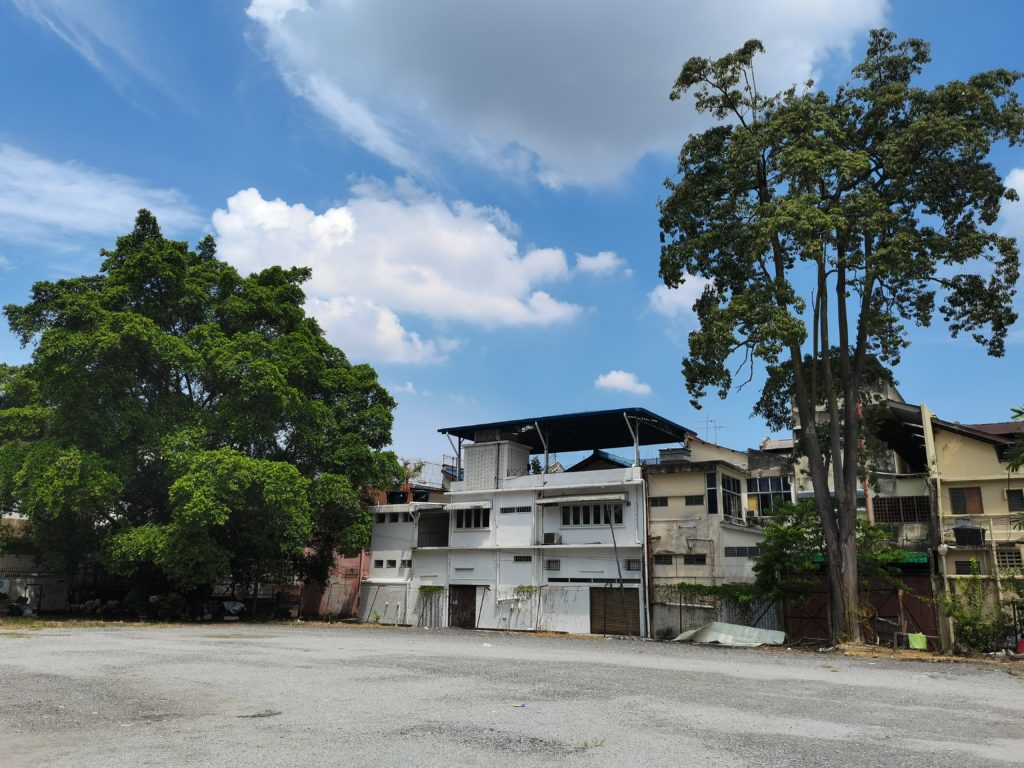
Primary camera on auto mode for the Huawei nova 7 SE
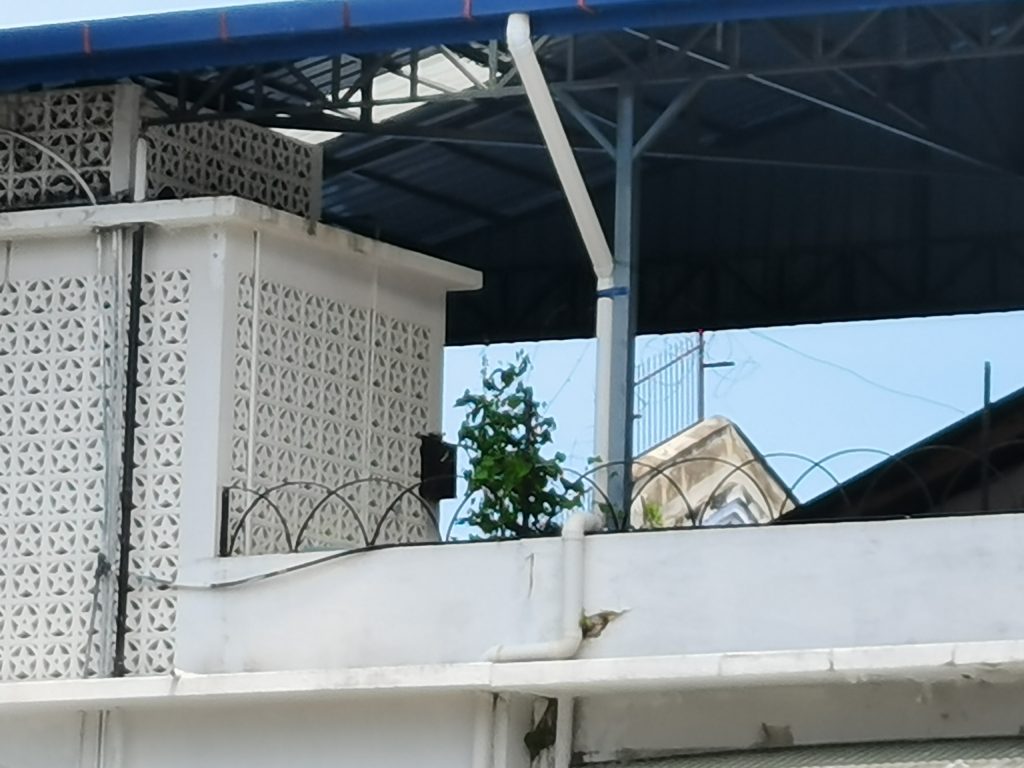
10x digital zoom on the Huawei nova 7 SE. Pretty good detail retention in the masonry belying the usual dodgy results of relying purely on digital zoom
In practice, Huawei’s investments into computational photography have paid dividends here with good results on auto mode under all but the most challenging shooting scenarios.


Shots from the wide angle and primary camera under daylight conditions were excellent, especially for a midrange category phone. The less powerful wide angle camera does the job but stills are a bit on the soft side especially when you peer at it up close along with slightly more muted colours versus the primary 64MP camera which delivers a more vibrant palette especially for foliage and blues and retains more detail .

Auto mode in low light on the Huawei nova 7 SE
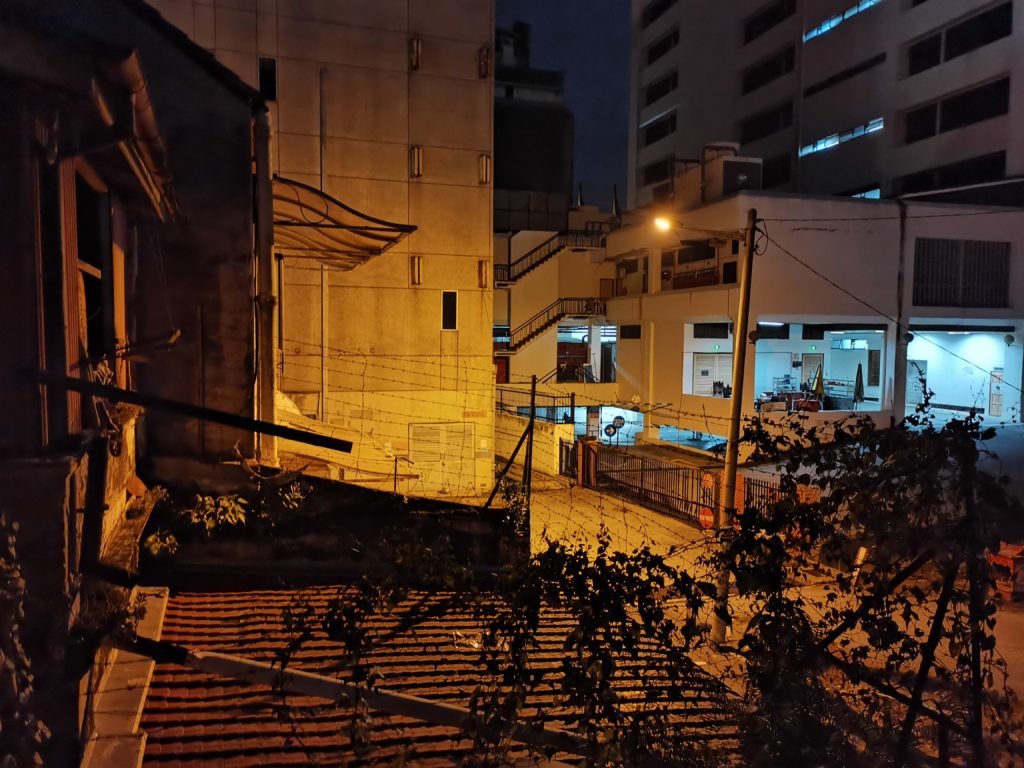
Night mode enabled – better dynamic range and bit more detail retention though you need a 7-second delay for it to work.

Night mode on with 10x digital zoom
Shots on auto mode in dim light offered fair results on both the primary and wide angle camera. The dedicated Night mode relies on the main camera and needs a 7-second timer delay though this pays off with brighter shots that have better dynamic range but the lack of OIS and the modest hardware here means that it works best with some amount of light n the area like a street lamp for decent shots.
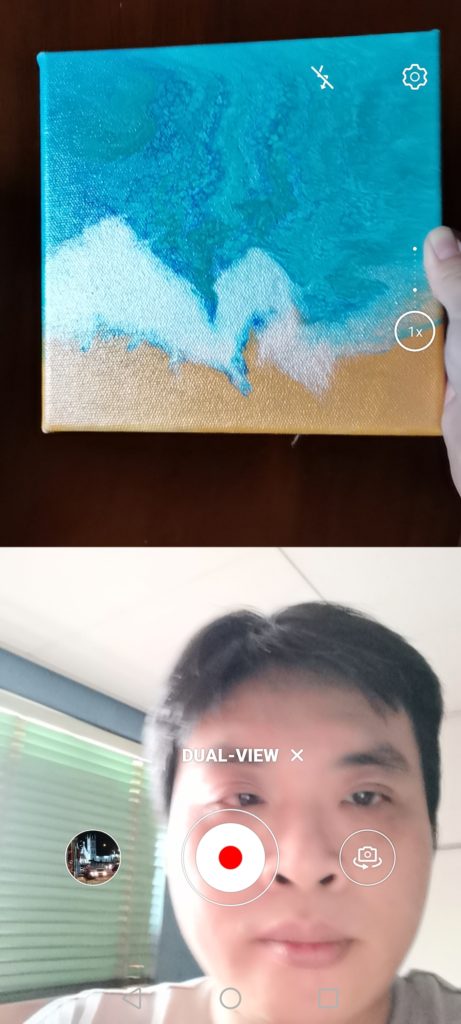
A screencap of the Dual view video mode on the Huawei nova 7 SE. It has creative uses especially if you’re aiming to share live commentary on whatever you’re currently experiencing like a holiday vista or a concert.
The nova 7 SE also has a Dual View mode that simultaneously captures video from both the front and rear cameras. It’s an amusing feature that will likely see use in holiday videos or live vlogging.
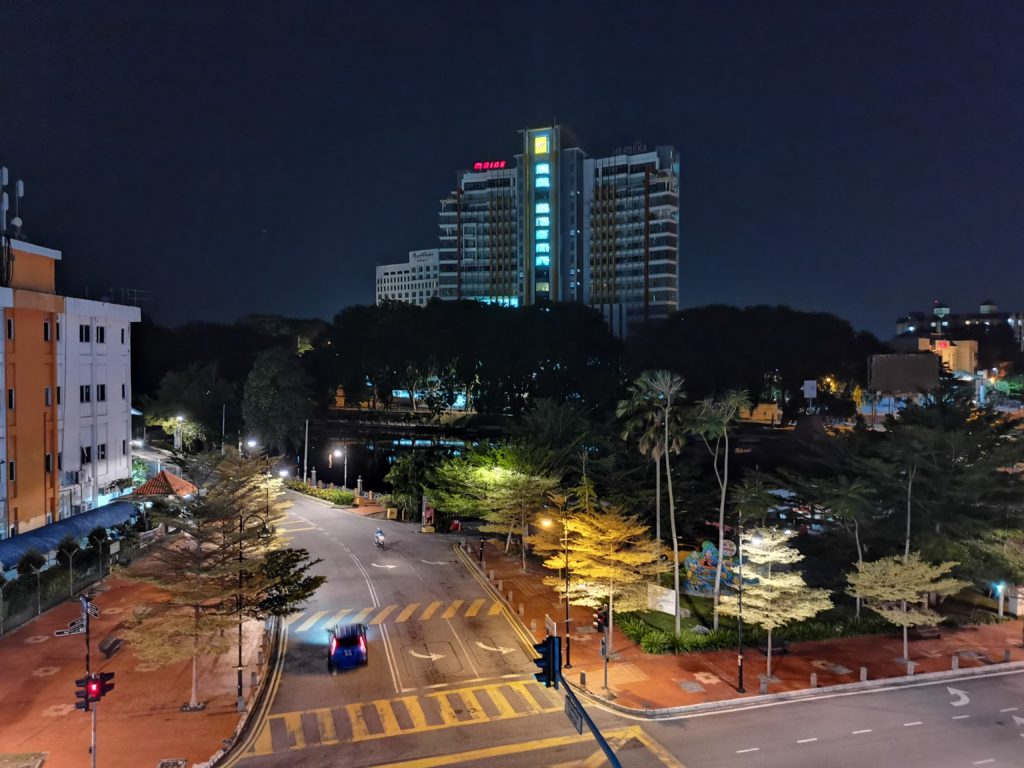
Primary camera on auto at dusk. Note the A&W logo someone near the centre of the picture at right side of the road.
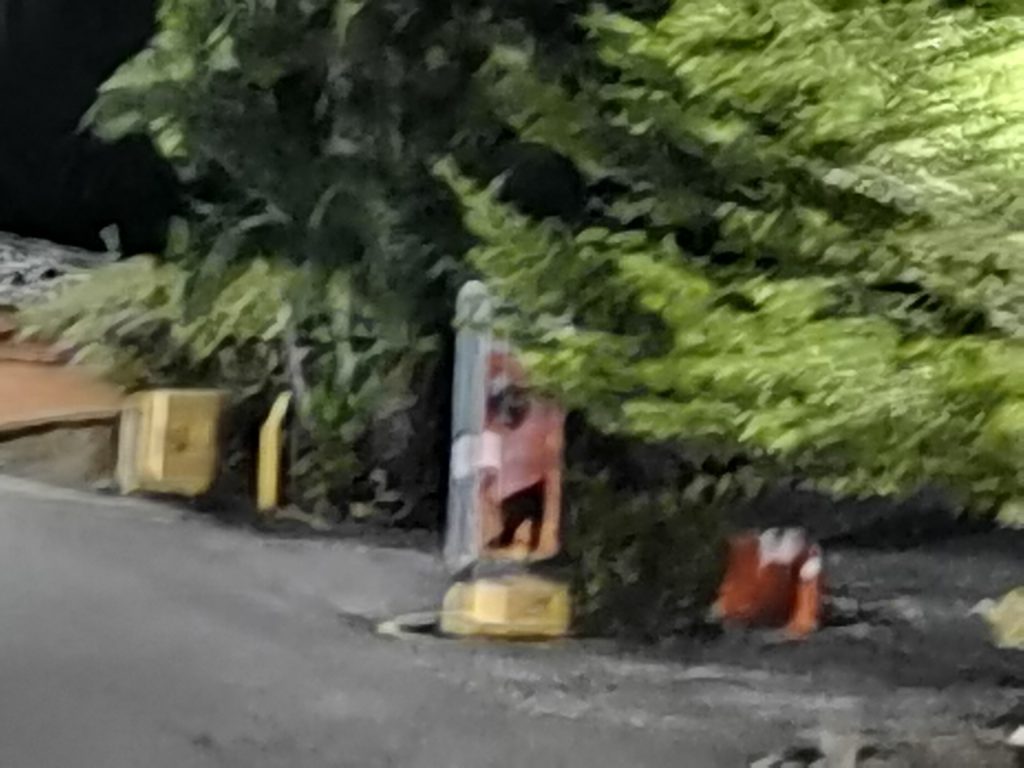
Maximum zoom on auto. The image is fuzzy, pun notwithstanding, but the Root Bear is still legible after a fashion.

Ultrawide angle camera in daylight on Auto. Note the fisherman on the distant shore.
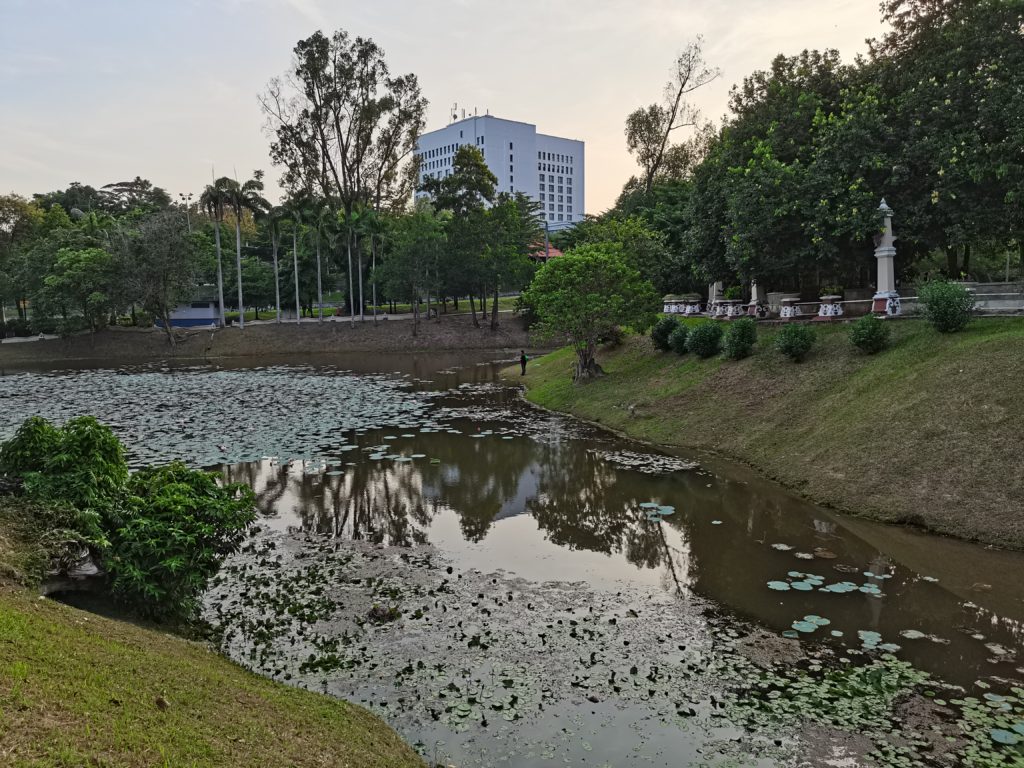
Primary camera on auto mode. Note the more vibrant colour rendition versus the ultrawide angle camera.

Maximum 10x digital zoom – see the fisherman by the lakeside?
One thing to note is that the digital zoom on offer here with the nova 7 SE is surprisingly good for what you pay for. At 2X zoom, shots are cropped in from the 64MP sensor and look pretty good. Beyond that,things get noisy but are still fairly legible even under dimmer light conditions.
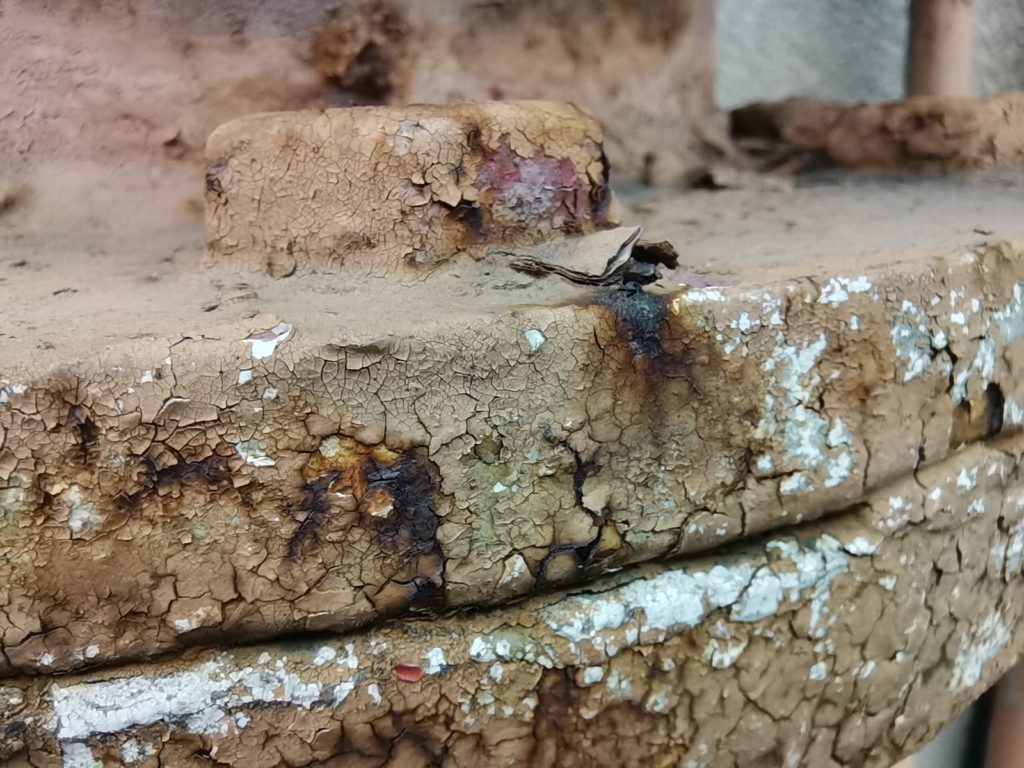
Macro mode on the nova 7 SE
Anything dimmer than street lighting means you get a pitch black shot even with Night mode activated and all of the phone’s AI-enhanced digital sorcery in play. Front selfie shots were pretty good as well with a modestly restrained beautification mode that managed to handle male subjects well without ridiculously excessive skin smoothing.

Indoors shot of shrubbery with the nova 7 SE on auto mode
The lack of OIS when capturing 4K video on the rear camera means that you’ll get best results with a tripod or gimbal under daylight conditions.
When taking video at 1080p, you benefit from AI stabilisation that helps smooth out hand shakes with good results and a slightly more vibrant palette under bright lighting conditions. Captured footage is by no means NatGeo fare but it’s certainly enough for uploading to social media or for cobbling together a holiday video.
Huawei nova 7 SE verdict
At RM1,499, the Huawei nova 7 SE is a reasonably priced midrange phone that has a lot going for it. This price tag is equal to its earlier debut in China, even accounting for exchange rates where it debuted a t2,399CNY which is about RM1,499 for the equivalent model with 128GB of storage.
At its price point and given its capabilities, the nova 7 SE is an enticing contender with a large display, excellent battery life and a fairly decent set of cameras compared to phones in its price range.
If you can live with the lack of Google services and are willing to hop through a few hoops, now made easier with Huawei’s AppFind app, the nova 7 SE is a worthy midrange contender.
What we liked Eyecatching finish, supports 5G, good battery life, vibrant display, has 3.5mm audio jack
What we didn’t Still needs work to get the apps you want, would be nice to have water resistance on casing, needs NM cards to expand memory
We say The nova 7 SE melds a decent camera array, swift performance, good battery life and fetching good looks along with 5G support, making it the cheapest 5G capable phone in Malaysia at this point in time. The lack of Google services is irksome but Huawei’s made inroads to making the process of getting the apps you want on the phone easier and at its price point, it’s well worth a look if you’re on the hunt for a midrange 5G capable phone.
Review unit courtesy of Huawei Malaysia. Available for purchase at their official online store.
Huawei nova 7 SE
-
Display
-
Performance
-
Cameras
-
Build Quality
-
Design
-
Value
Huawei nova 7 SE
The nova 7 SE melds a decent camera array, swift performance, good battery life and fetching good looks along with 5G support, making it the cheapest 5G capable phone in Malaysia at this point in time. The lack of Google services is irksome but Huawei’s made inroads to making the process of getting the apps you want on the phone easier and at its price point, it’s well worth a look if you’re on the hunt for a midrange 5G capable phone.

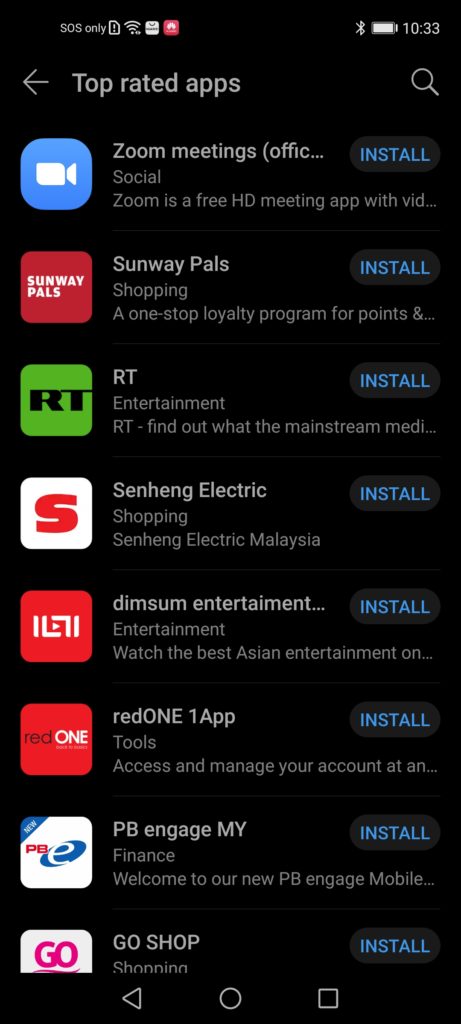
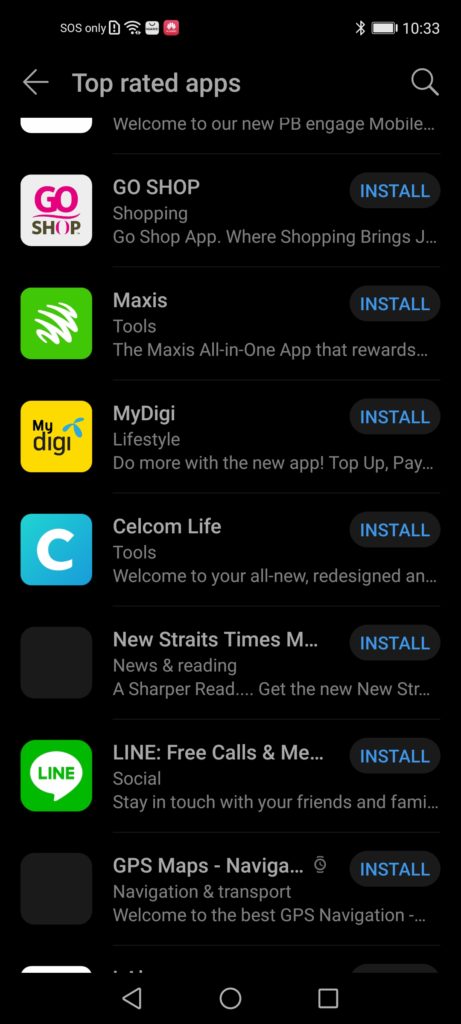
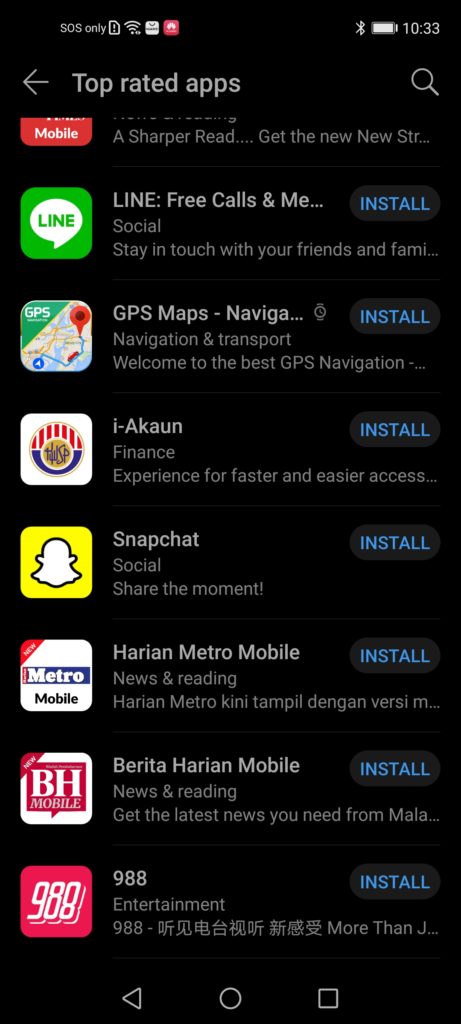
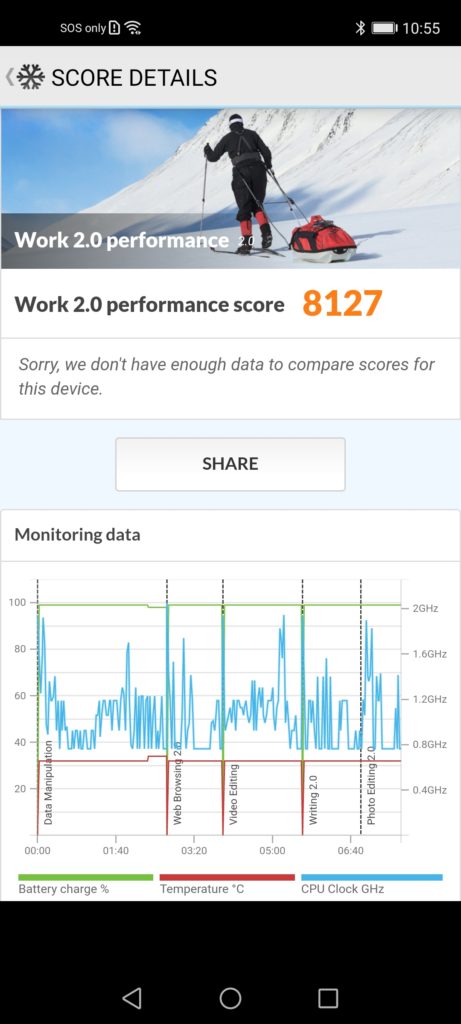
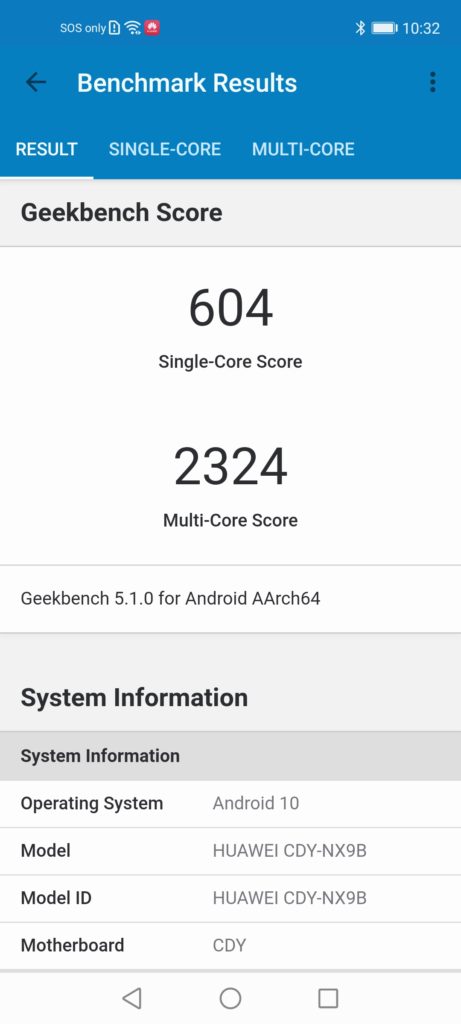

0 Comments